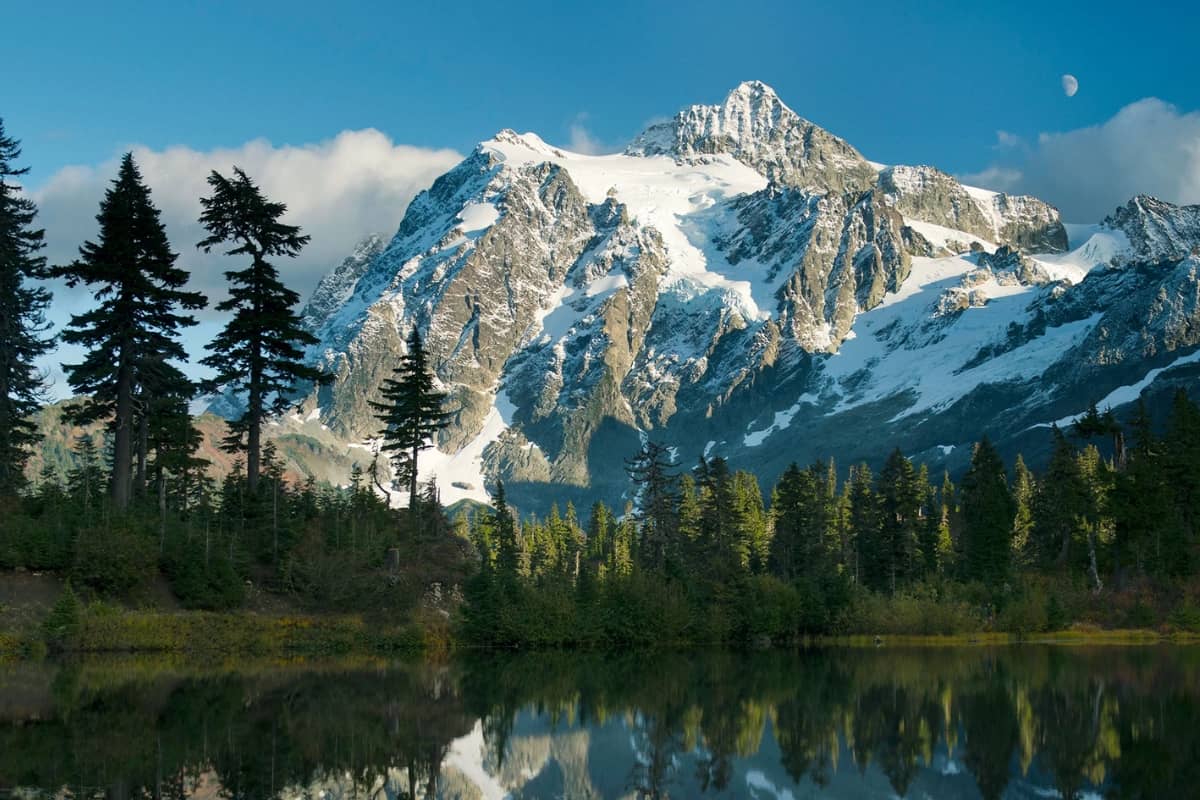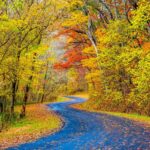North Cascades National Park, located in Washington state, is renowned for its dramatic mountain scenery, abundant wildlife, and remote wilderness. However, beneath its serene landscapes lie hidden dangers that every visitor must be aware of to enjoy the park safely. Exploring these risks reveals how the park’s beauty and remoteness can also be a source of potential peril. Here’s an in-depth look at six hidden dangers at North Cascades National Park.
1. Steep Snowfields and Ice Hazards
Even in the middle of summer, snow can persist at higher elevations in North Cascades National Park, particularly on the trails that pass through alpine areas. Hikers and climbers face significant risks when traversing these snowfields without the proper equipment or experience. Using an ice axe and knowing how to self-arrest in case of a fall is essential for anyone venturing onto snow-covered terrain. Falls on steep snow can result in serious injuries, as many trails are unmarked, making it easy to lose the correct path when snow obscures it. The rugged and isolated terrain makes rescue operations difficult and time-consuming, further exacerbating the dangers.
In addition to snowfields, ice hazards can form early and late in the season, especially in shaded areas or higher altitudes. Proper footwear with sturdy soles and crampons are recommended for those navigating icy sections. These ice patches may not always be visible at first glance, especially during rapid temperature changes.
2. Unmarked and Challenging Trails
Most trails in North Cascades National Park follow valley bottoms or climb to high mountain passes. While this allows for stunning views, it also means that the trails can be incredibly steep and, at times, treacherous. Snow, dense vegetation, and the lack of visible markers can make navigation a real challenge. Many visitors are surprised by how quickly conditions can change from manageable to dangerous.
Since there are no blazes or markers on the trails, especially in the snow-covered high country, visitors must be proficient in reading topographic maps and using a compass or GPS device. However, even experienced hikers can find route-finding difficult, particularly during early summer when snowmelt creates temporary water crossings and muddy, unstable paths. It’s advisable to inquire at a ranger station about the current conditions of trails and whether any unexpected hazards have emerged.
3. Dangerous Stream Crossings
Stream crossings in North Cascades National Park can be deceptively dangerous, particularly during late spring and early summer when snowmelt significantly raises water levels. While many of the park’s larger streams have bridges, not all do. Visitors should be aware that high water levels can make even seemingly shallow streams dangerous to cross. The force of the current can knock hikers off their feet, resulting in injury or even drowning.
Hikers should look for safe crossing points, such as wider sections of the stream where the water is shallower and the current less strong. It’s important to cross in the morning when snowmelt is at its lowest and to unbuckle your backpack’s straps in case you need to abandon it to escape a fast-moving current. If conditions are too hazardous, it’s better to turn back or wait for the water levels to drop.
4. Wildlife Encounters
The North Cascades is home to a diverse range of wildlife, including black bears, mountain lions, and even grizzly bears in the surrounding ecosystem. While attacks are rare, they can happen, particularly if hikers surprise a bear or cougar or if food is not stored properly. Bears are opportunistic feeders, and food left out in campsites or on trails can attract them.
Carrying bear spray and knowing how to use it is crucial for anyone venturing into the park’s more remote areas. In addition, campers and hikers must use bear canisters to store food and avoid leaving any scented items (such as toiletries or garbage) in areas where bears could find them. These precautions are not only for personal safety but also help prevent bears from becoming accustomed to human food, which can lead to them being euthanized.
5. Waterborne Illnesses
Drinking untreated water from streams, rivers, or lakes in North Cascades National Park poses a serious risk of waterborne illnesses. Giardia lamblia, a parasite that causes gastrointestinal distress, is prevalent in many of the park’s water sources. Hikers and campers should never assume that water in the wilderness is safe to drink without proper treatment.
Using a water filter, purification tablets, or boiling water before consumption are the most effective methods to ensure that it’s safe to drink. Even small, clear streams can be contaminated by animal waste or decaying plant matter, making it essential to treat all water before use.
6. Limited Cell Phone Reception and Difficult Rescues
One of the most significant risks in North Cascades National Park is its remote location, which results in limited cell phone reception. Many areas of the park are completely cut off from mobile networks, meaning that hikers and climbers cannot rely on cell phones for emergency communication. Even in high-elevation areas where some signal might be found, the mountainous terrain can interfere with transmission, and calls often go to dispatch centers far outside the park, sometimes even in Canada.
Because of these communication challenges, rescues in North Cascades National Park can be incredibly difficult and time-consuming. If someone is injured or lost, it may take hours or even days for rescuers to arrive, especially if bad weather hampers the search. For this reason, it’s vital to leave a detailed itinerary with someone before heading out into the wilderness, including your planned route and expected return time.
Conclusion
North Cascades National Park offers breathtaking beauty and unparalleled opportunities for outdoor adventure, but it also comes with significant risks. From steep snowfields to unmarked trails, dangerous stream crossings, unpredictable wildlife, waterborne illnesses, and limited rescue options, the hazards of the park can be deadly for the unprepared. However, with proper planning, equipment, and awareness, visitors can minimize these risks and enjoy the park’s stunning landscapes safely. Before embarking on any trip to North Cascades, it’s essential to check in with park rangers for the latest trail conditions and safety advice and to ensure that you are well-equipped for the unique challenges this rugged wilderness presents.






